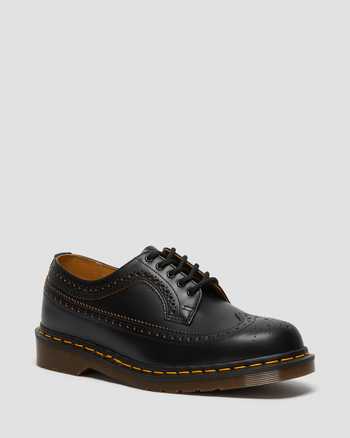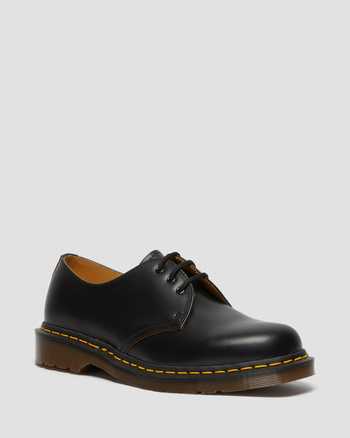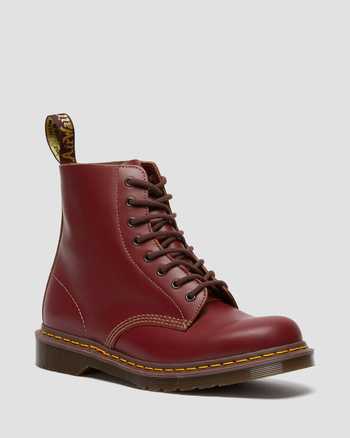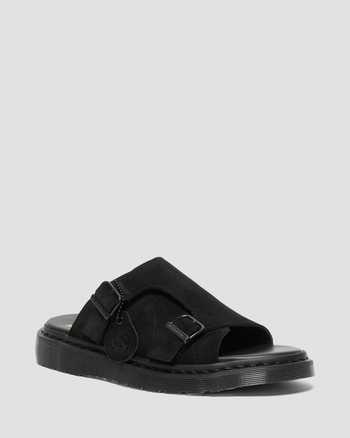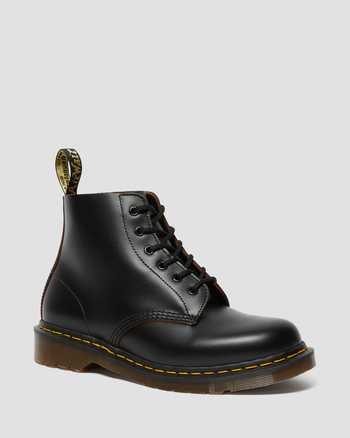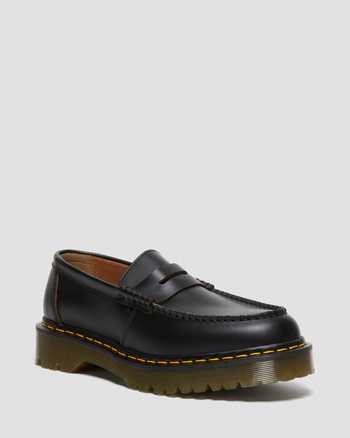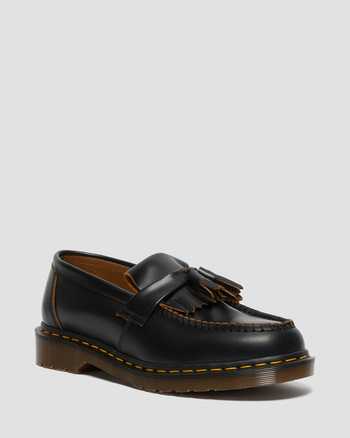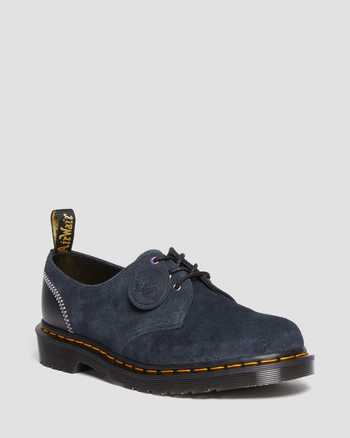Handcraft and
Personal History
A Conversation With Mark Corfield-Moore
United by our affinity for the art of handcrafting, we caught up with multi-disciplinary artist Mark Corfield-Moore about the how weaving brought him closer to his heritage. Keep reading for more on his craft, tradition, and to check out our own handcrafted Made in England collection.
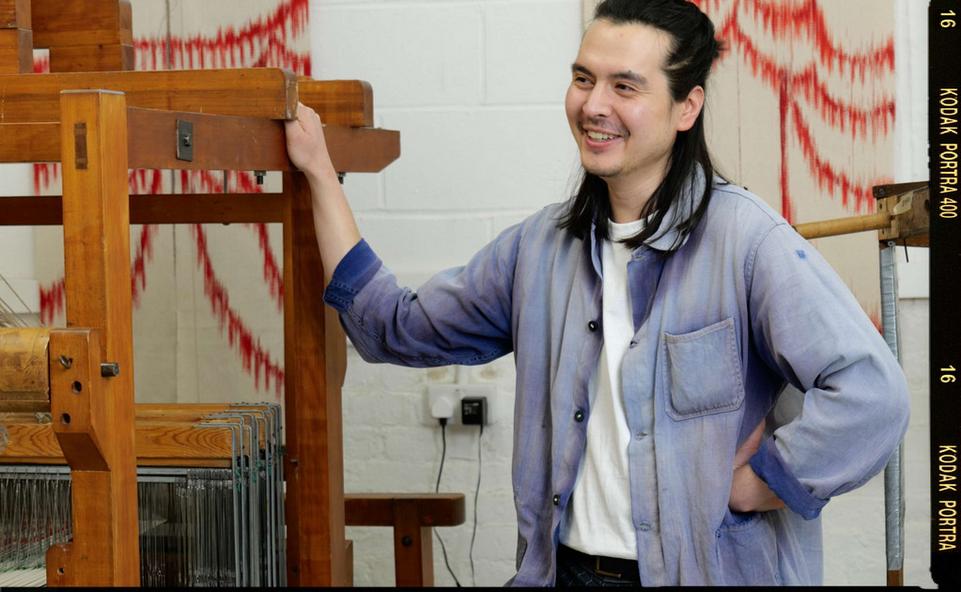
Handcraft and
Personal History
A Conversation With Mark Corfield-Moore
United by our affinity for the art of handcrafting, we caught up with multi-disciplinary artist Mark Corfield-Moore about the how weaving brought him closer to his heritage. Keep reading for more on his craft, tradition, and to check out our own handcrafted Made in England collection.

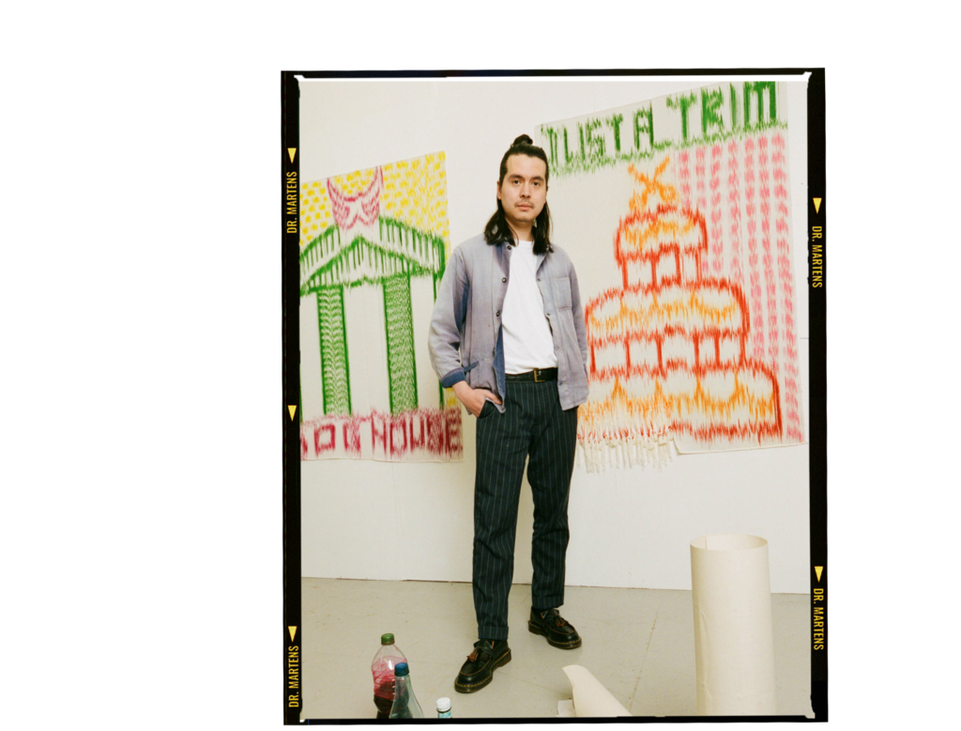
MARK WEARS VINTAGE ADRIAN TASSEL LOAFERS
MARK CORFIELD-MOORE: My name is Mark Corfield-Moore, and I'm a painter who incorporates handwoven textiles in my practice.
DR. MARTENS: Can you describe the feeling of creating something handcrafted and tactile?
MARK CORFIELD-MOORE: I definitely think that making is a form of thinking, and it's a different way of thinking, but it's still very much a valid method of working. Often, if I don't quite know what I want to paint next, so I begin setting up the loom. By the time it's set up, I know what I want to do.
DR. MARTENS: Is it important to have that personal connection come through for the viewer?
MARK CORFIELD-MOORE: Around nine years ago, when I moved to London, a friend told me, I think it is important. The difference now is there's more at stake because it's my story. It's amazing how much more invested you become when it comes from you.
MARK CORFIELD-MOORE: My name is Mark Corfield-Moore, and I'm a painter who incorporates handwoven textiles in my practice.
DR. MARTENS: Can you describe the feeling of creating something handcrafted and tactile?
MARK CORFIELD-MOORE: I definitely think that making is a form of thinking, and it's a different way of thinking, but it's still very much a valid method of working. Often, if I don't quite know what I want to paint next, so I begin setting up the loom. By the time it's set up, I know what I want to do.
DR. MARTENS: Is it important to have that personal connection come through for the viewer?
MARK CORFIELD-MOORE: I think it is important. The difference now is there's more at stake because it's my story. It's amazing how much more invested you become when it comes from you.
MARK WEARS VINTAGE ADRIAN TASSEL LOAFERS
"MAKING IS A FORM OF THINKING, AND IT'S A DIFFERENT WAY OF THINKING"
DR. MARTENS: Where do you think the line is if there is one between art and craftsmanship?
MARK CORFIELD-MOORE: I don't know. To be honest, I flirt with both. At the end of the day, craft is an extensive, intense engagement with the process, but you can say that about painting, and you could say that about photography or anything else, so I don't know what the difference is, really.
DR. MARTENS: What importance do you think handcraft has for modern society?
MARK CORFIELD-MOORE: I think it's so important. People are so detached from knowing how anything is made or where anything comes from. I didn't realise the complicated process it is to make DM's shoes. But as our world gets more digital, we are losing our hands, and what we can do with them, so I'm just really grateful that I can use them every day in a meaningful way.

"MAKING IS A FORM OF THINKING, AND IT'S A DIFFERENT WAY OF THINKING"
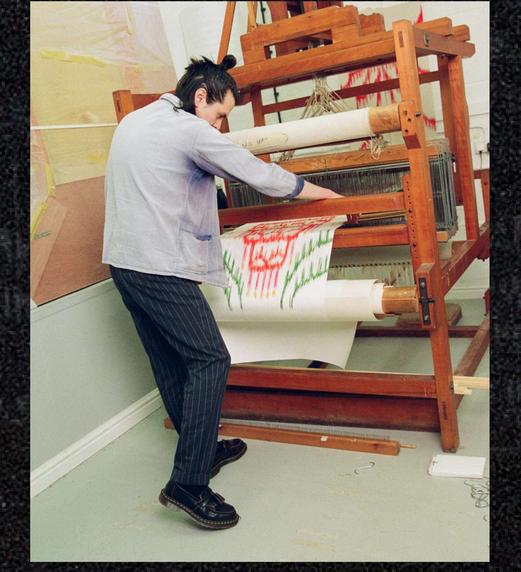
MARK WEARS VINTAGE ADRIAN TASSEL LOAFERS
DR. MARTENS: Where do you think the line is if there is one between art and craftsmanship?
MARK CORFIELD-MOORE: I don't know. To be honest, I flirt with both. At the end of the day, craft is an extensive, intense engagement with the process, but you can say that about painting, and you could say that about photography or anything else, so I don't know what the difference is, really.
DR. MARTENS: What importance do you think handcraft has for modern society?
MARK CORFIELD-MOORE: I think it's so important. People are so detached from knowing how anything is made or where anything comes from. I didn't realise the complicated process it is to make DM's shoes. But as our world gets more digital, we are losing our hands, and what we can do with them, so I'm just really grateful that I can use them every day in a meaningful way.
MARK WEARS 1461 MADE IN ENGLAND BUCK SUEDE SHOES
MARK WEARS 1461 MADE IN ENGLAND BUCK SUEDE SHOES
DR. MARTENS: When did you first incorporating weaving into your work?
MARK CORFIELD-MOORE: I first started weaving in the last year of my MA, about three or four years ago. I've always been interested in textiles and fabrics, and I was doing a lot of silk screen printing. But after a while, everything felt like an application onto a surface. I really wanted the image that I created to be embedded and part of the process itself. So it was just like, another layer of detail that I wanted to get involved in. I was really looking to get invested in a lengthy process and a routine. And I think weaving really grounds me because it's such a long process of setting up the loom.
"AS OUR WORLD GETS MORE DIGITAL, WE ARE LOSING OUR HANDS, AND WHAT WE CAN DO WITH THEM"
DR. MARTENS: Could you tell us how you got involved in traditional techniques?
MARK CORFIELD-MOORE: My art practice, specifically incorporating weaving into it, allowed me to get back in touch with my Thai heritage. And it's brought me back to Thailand several times to learn traditional techniques out there. And so I often go back to Nan, which is near the north on the border of Lao, to learn from the local weavers there to learn traditional ikat, stay with my cousins and get to know my family. I wouldn't have had that opportunity because why would I spend two months in Thailand otherwise. It's so nice to feel like there's a connection between what I'm doing now and what my grandmother would have done.
DR. MARTENS When did you first incorporating weaving into your work?
MARK CORFIELD-MOORE: I first started weaving in the last year of my MA, about three or four years ago. I've always been interested in textiles and fabrics, and I was doing a lot of silk screen printing. But after a while, everything felt like an application onto a surface. I really wanted the image that I created to be embedded and part of the process itself. So it was just like, another layer of detail that I wanted to get involved in. I was really looking to get invested in a lengthy process and a routine. And I think weaving really grounds me because it's such a long process of setting up the loom.
"AS OUR WORLD GETS MORE DIGITAL, WE ARE LOSING OUR HANDS, AND WHAT WE CAN DO WITH THEM"
DR. MARTENS: Could you tell us how you got involved in traditional techniques?
MARK CORFIELD-MOORE: My art practice, specifically incorporating weaving into it, allowed me to get back in touch with my Thai heritage. And it's brought me back to Thailand several times to learn traditional techniques out there. And so I often go back to Nan, which is near the north on the border of Lao, to learn from the local weavers there to learn traditional ikat, stay with my cousins and get to know my family. I wouldn't have had that opportunity because why would I spend two months in Thailand otherwise. It's so nice to feel like there's a connection between what I'm doing now and what my grandmother would have done.
MARK WEARS PENTON BEX LEATHER LOAFERS
DR. MARTENS: How much of your heritage is related to your work?
MARK CORFIELD-MOORE: I think it's come through a lot more recently. I view my work as sort of pre lockdown and post lockdown. During lockdown, that's when I started using my own drawings and also using my own Thai heritage and experience of being part of the British Thai diaspora. My heritage was brought up a lot in conversations, and I just thought, you know what, I'm going to own it now. If people want to put me in that context, then the best way I thought about it was maybe creating a series of works of my childhood or my life. So I made a whole series of things that wouldn't make any sense to anyone else. But to me, they do.
DR. MARTENS: What is the ikat technique?
MARK CORFIELD-MOORE: It's a weaving technique found in Thailand and all along the old silk route. What I really liked about ikat was that it's known for its sort of glitchy blurred aesthetic. And I thought it looked like a glitched digital image. But the thing that's really interesting about ikat is that an image is dyed onto the threads before they're woven. It seems like it's the crossover between painting and drawing with textiles. You could make parallels to my heritage, but also, fabric itself is essentially a nomadic material, and that's why I really enjoy it. Traditionally, it was used for tents or carpets, things that were always on the move. And I really liked this idea of moving forwards.
DR. MARTENS: How do you adapt a traditional technique to make it feel modern?
MARK CORFIELD-MOORE: I think the process is traditional, but because my source material comes from me, it's going to somehow resonate as contemporary. You shouldn't be too beholden to the process. Like, I don't practice traditional ikat, that would mean dyeing the threads, but I use paint, so there's more freedom. My hand is more evident.
"I STARTED USING MY OWN DRAWINGS AND ALSO USING MY OWN THAI HERITAGE AND EXPERIENCE OF BEING PART OF THE BRITISH THAI DIASPORA."
MARK WEARS PENTON BEX LEATHER LOAFERS
DR. MARTENS: How much of your heritage is related to your work?
MARK CORFIELD-MOORE: I think it's come through a lot more recently. I view my work as sort of pre lockdown and post lockdown. During lockdown, that's when I started using my own drawings and also using my own Thai heritage and experience of being part of the British Thai diaspora. My heritage was brought up a lot in conversations, and I just thought, you know what, I'm going to own it now. If people want to put me in that context, then the best way I thought about it was maybe creating a series of works of my childhood or my life. So I made a whole series of things that wouldn't make any sense to anyone else. But to me, they do.
DR. MARTENS: What is the ikat technique?
MARK CORFIELD-MOORE: It's a weaving technique found in Thailand and all along the old silk route. What I really liked about ikat was that it's known for its sort of glitchy blurred aesthetic. And I thought it looked like a glitched digital image. But the thing that's really interesting about ikat is that an image is dyed onto the threads before they're woven. It seems like it's the crossover between painting and drawing with textiles. You could make parallels to my heritage, but also, fabric itself is essentially a nomadic material, and that's why I really enjoy it. Traditionally, it was used for tents or carpets, things that were always on the move. And I really liked this idea of moving forwards.
DR. MARTENS: How do you adapt a traditional technique to make it feel modern?
MARK CORFIELD-MOORE: I think the process is traditional, but because my source material comes from me, it's going to somehow resonate as contemporary. You shouldn't be too beholden to the process. Like, I don't practice traditional ikat, that would mean dyeing the threads, but I use paint, so there's more freedom. My hand is more evident.



